How to Increase Humidity in Tortoise Tank / Table? – A COMPLETE Guide
As an Amazon Associate, I may earn from qualifying purchases at no extra cost to you.

Tortoises are docile land-dwellers that need humidity.
A lot of humidity.
Hence, keeping a tortoise as a pet means creating the perfect humidity and temperature for this shy, reclusive reptile.
As pets, tortoises are typically kept in either tables or tanks, of which you have to create the perfect tabletop environment for the animal.
How to increase humidity in a tortoise tank / table?
Read on to find out!
More...
Tortoise tables vs Tortoise tanks
Tortoise tables and tortoise tanks have distinct similarities and differences, both with their own pros and cons.
Firstly tortoise tables.
Tortoise tables are shoebox-type environments with an open top.
This offers better ventilation and makes them less prone to bacteria buildup and infections.
On the other hand, tortoise tanks are fully closed off, which allow you to control the environment and make micro changes to the temperature and humidity.
However, both have features such as a hide box that simulates the burrow a tortoise will seek at night to sleep in.
A tortoise tank / vivarium is a direct upgrade over a table and is much easier to manage, with many tortoise owners recommending using a tank over a tortoise table especially for hatchlings or babies.
What is the ideal temperature for a tortoise?
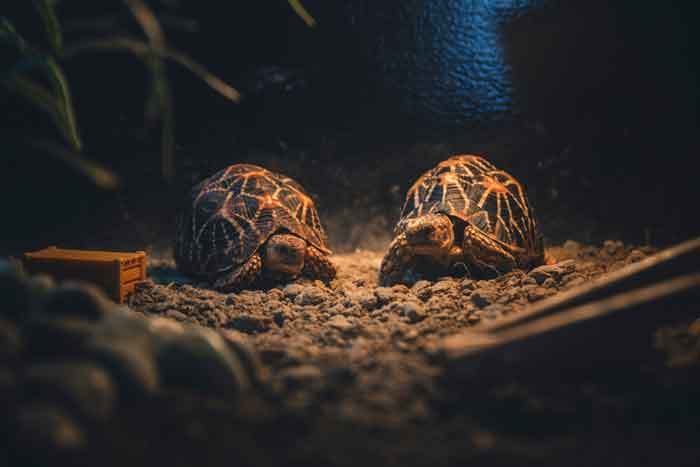
The room temperature where the tortoise table is held shouldn’t go below 24 °C (75 °F) at any given moment.
If the temperature drops too low, the tortoise might have trouble eating and digesting food.
Tortoises have an internal clock that changes in relation to the ambient temperature and when it gets too cold for too long, they prepare for hibernation by lowering their food intake.
However, if the ambient temperature fluctuates wildly, the tortoise will be forced to stay active to cool off but won’t have any appetite.
As a result, it may develop complications such as immune system failure and respiratory problems!
Creating zones
A tortoise will naturally move between sunbathing at day and snoozing in a burrow at night.
Hence, both of these environments need to be provided in both tortoise tables and tanks.
Tortoise owners can install a basking slate made out of special type of rock that doubles up to trim the tortoise’s nails when it moves on it. Otherwise, you can simply take it outside for 6-8 hours a day.
Always aim to create a gradient, where heating and lighting elements are spaced to create zones of darkness, heat and light.
The benefit is that the tortoise can choose an environment where it feels comfortable at the moment.
What is the ideal humidity for a tortoise?
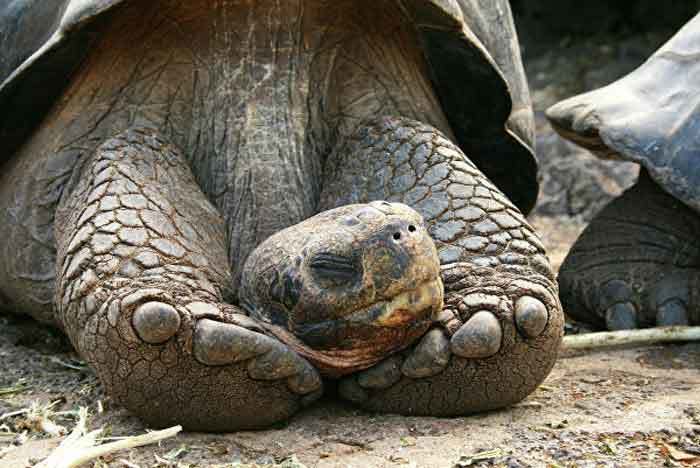
Many tortoise species tolerate and enjoy very high humidity, in the range of 70-100%.
They can handle humidity as low as 50% as long as they have a damp spot to re-hydrate in.
Condensation on the sides of a tortoise tank is a good sign that humidity is just right.
If not, it can be increased in several ways..
How to increase humidity in tortoise tank / table?
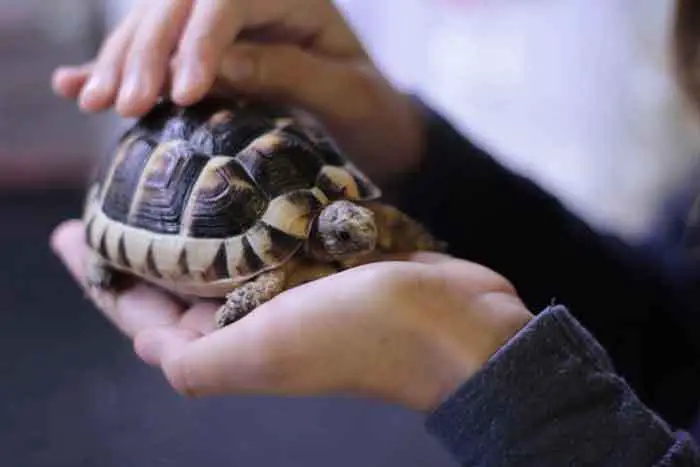
A water bowl is the default way of raising humidity in a tortoise table/tank.
If the reptile spends an inordinate amount of time in the bowl, it’s a sign it needs more humidity.
Live plants or sponges soaked in water also help trap moisture.
Besides that, water can poured directly in the bedding, of which cypress mulch is a good choice.
A water feature can be created on the side of the enclosure, with a dripper above steadily releasing water.
Misting the enclosure or having a timed humidifier mist it is a good idea as well.
Related: Best Humidifier for Tortoises.
This can be done by inserting the humidifier’s tubing into the tank.
A table can be used as well, though it will need to be partially covered in order to trap moisture.
If you have a tortoise table, do note to include the heating elements and lights, and use plastic with some foil as protection from lights when covering the table.
Note:
Too much humidity can lead to mold and mildew if the air gets stale.
Hence, proper ventilation is a must in a tortoise tank.
A set of holes on top and a set on the side of the tank will ensure proper ventilation as the warm air rises out and the cool air rushes in.
Choosing the right bedding
Coconut fiber and organic top soil are a good bedding combo .
This mixture mimics the natural humus found in forests, providing firm ground and retaining moisture.
De-stemmed, dry alfalfa hay is another solid bedding choice, as do paper towels, as long as they result in sufficiently high humidity.
Sand is not recommended for bedding, as it can choke tortoises if sand particles get into their mouths.
Does humidity cause pyramiding?
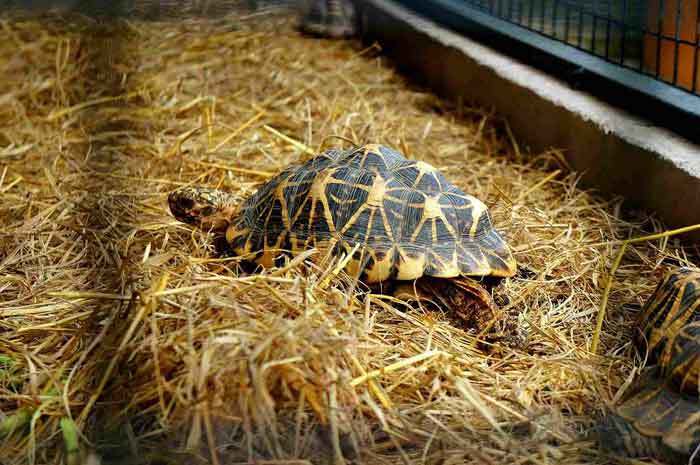
A going rumor among newfangled tortoise owners is that too much humidity causes shell warping aka “pyramiding”; when that happens, the shell develops pronounced bumps.
While this may be a possibly factor, pyramiding may be due to other causes as well and there does not seem to be a single cause.
Some possible causes include:
Ultimately, without a vet’s exam, it’s impossible to tell what is causing the pyramiding.
Thankfully, while pyramiding is incurable, it is treatable if caught early enough.
Pyramiding does not hurt the tortoise but may indicate it’s in poor health and can inhibit mating if in a female.
The condition is rarely seen in wild tortoises that lead a more active life.
Making a tortoise hide box
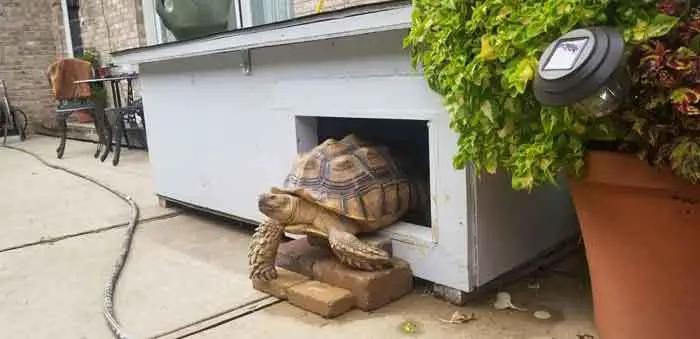
Tortoises will have an instinct to hide in a burrow at night.
In captivity, this means the owner should create a hide box, or a replica of tortoise’s burrow, with the ideal warm and humid conditions.
A small plastic box with some sphagnum moss makes the perfect hiding spot for the tortoise.
The moss repels fungi and is non-toxic if ingested by the tortoise.
Keep in mind tortoises have trouble going up inclines, so make them a nice ramp. Additionally, file away any rough edges of the box if you cut it open.
If you have a small tortoise, expect it to grow and that you’ll have to replace the hide box.
Lastly, cleaning is a must due to fecal matter leading to infections. Plastic is lightweight, easy to handle and replace, making it the material of choice for a hide box.
Conclusion: How to Increase Humidity in Tortoise Tank / Table?
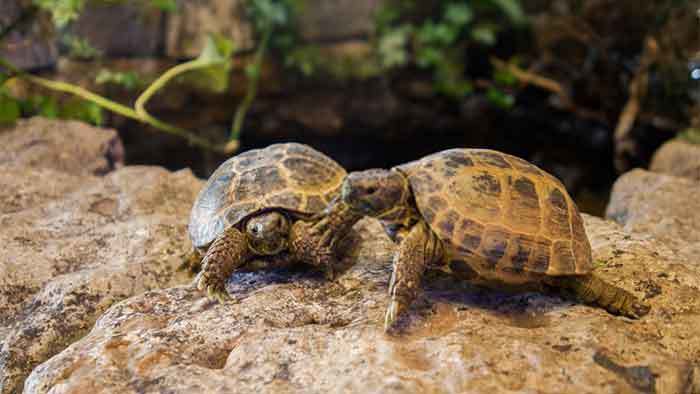
Tortoises can live up to a century, but only if their living conditions do not cause them stress.
They require a lot of dedication and patience but repay the owner with lifelong companionship.
If you raise them as babies, the first year of their life is crucial to their health.
Keep the humidity high, space out the lighting and heating and your friend shell keep you company for a long, long time.
The ideal humidity and temperature for tortoises should mimic that of a damp, summer forest. The bedding should resemble the humus layer found in forests.
Tortoise pets don’t need much space but one they’re given should be as close to their natural habitat as possible.
Both tables and tanks can provide the tortoises their ideal summer environment, where they’ll lead a happy, fulfilled and healthy life.
